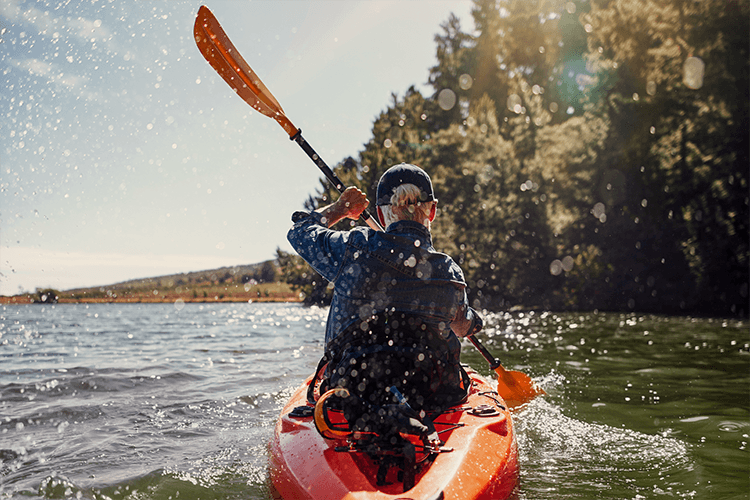
Whether you enjoy the water via raft, kayak, paddleboard, or canoe – here are some tips to avoid common upper body injuries this summer.
Always warm up
A good warm up increases blood flow and circulation to your muscles which reduces your risk of injury. Stretching before you hop in the water can increase your range of motion and help prevent strains and sprains.
Stay hydrated
On those hot Central Oregon summer days, it’s important to stay hydrated even without any physical activity. Dehydration can lead to muscle cramping and muscle strains or tears. Be sure to start hydrating before you get in the water and continue to drink water as you exercise.
Keep a light grip on your paddle
“White knuckling,” or grasping your paddle too tightly, puts unnecessary pressure on your forearms, wrists, and elbows. When your muscles are tight and fatigued too quickly, you are more susceptible to overuse injuries such as tendonitis. Keep your fingers loose around the paddle.
Use your whole body, not just your arms
Focus on reaching forward with your torso rather than just your arms when starting each paddle stroke. This will be less fatiguing over the course of a long day spent in the water. You want your arms, chest, and torso to move with you as you rotate to avoid compromising positions, muscle strain, and overuse injuries.
Take a break
Whether it’s a 10 minute break in the middle of your paddle, or a week-long break due to an injury, always listen to your body and give it what it needs. Introduce longer or more frequent rest stops if you’re experiencing pain. Let your body rest for a day or two if you’ve been out on the water all weekend. If you’ve suffered a muscle strain or other injury that effects your sport of choice, either take a break completely or reduce your intensity to give the injury time to heal.
Generally speaking, the types of injuries seen in paddle sports usually occur due to trauma or overuse. Overuse injuries involve pushing the body beyond its limits, or doing too much, too soon, and/or too frequently. Traumatic injuries involve a one-time incident that directly impacts the body. Because of the repetitive nature of paddling, overuse injuries are very common.
If you suffer pain or an injury while enjoying paddle sports, our sports medicine specialists are here to help get you back to what you love.





